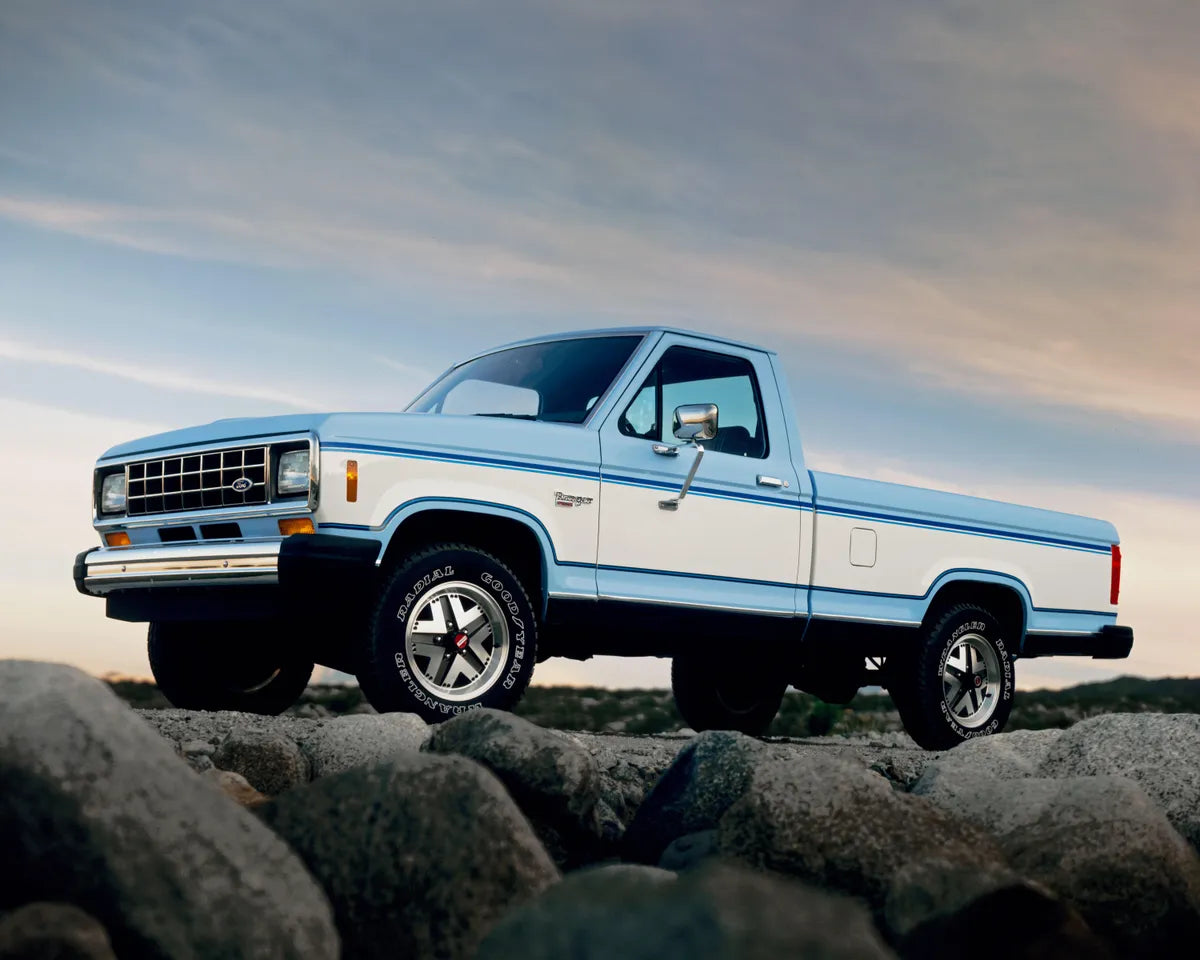

In the landscape of American pickups, the Ford Ranger has always stood as the kind of truck that knows exactly who it’s for. It doesn’t wear a cowboy hat and leather work boots like the Super Duty, nor does it lean into the grocery getter quirks of a Maverick. The Ranger walks that middle line, where capability meets sensibility, and where weekend warriors, gearheads, and budget-conscious families all find a reliable companion.
But the Ranger didn’t just show up in its modern, turbocharged glory. Its journey from a compact truck born in the early '80s to a globally respected midsize workhorse spans decades of market shifts, technological advancements, and a whole lot of customer loyalty. So where did it begin, and why does it still matter?
The Ford Ranger was first introduced in 1983, but its story starts a few years earlier, rooted in the challenges of the 1970s. The oil crisis had reshaped consumer behavior, and smaller, fuel-efficient Japanese trucks from brands like Toyota, Datsun (now Nissan), and Mazda were making serious inroads in the U.S. market. Ford had a stopgap solution: the Courier, a rebadged Mazda B-series sold under the blue oval. But it wasn’t a long-term answer. Ford needed to build its own small truck, designed and manufactured entirely in America.
Enter the first-generation Ranger.
Released in 1983, the original Ranger was compact, lightweight, and remarkably efficient for its time. It came with either a four or six-cylinder and was offered in both two and four-wheel drive. It hit the sweet spot for those who wanted a truck for commuting, light hauling, and occasional off-road use, without the size or price of a full-size F-Series.
It wasn’t luxurious. It certainly wasn’t fast. But it was useful. And importantly, it was American-built at Ford’s Twin Cities Assembly Plant in Minnesota, checking that “buy American” box for many shoppers.
As the compact truck market changed, so did the Ranger. The second-generation (1993–1997) brought improved safety features, a slight size increase, and more powerful engine options. Trim levels expanded, giving buyers more comfort and capability. The 4.0L V6 became a popular choice for those needing a little more muscle for towing or off-roading. Not much changed from the beginning of the second generation to the end in 2011.
This era also brought us some enthusiast-loved variants:
Splash Package (1993): A sportier, lowered Ranger with a....very 90's paint job and unique bodywork.
STX and Edge Packages: Gave the Ranger more rugged, off-road flair. (check those bed rail covers, wow)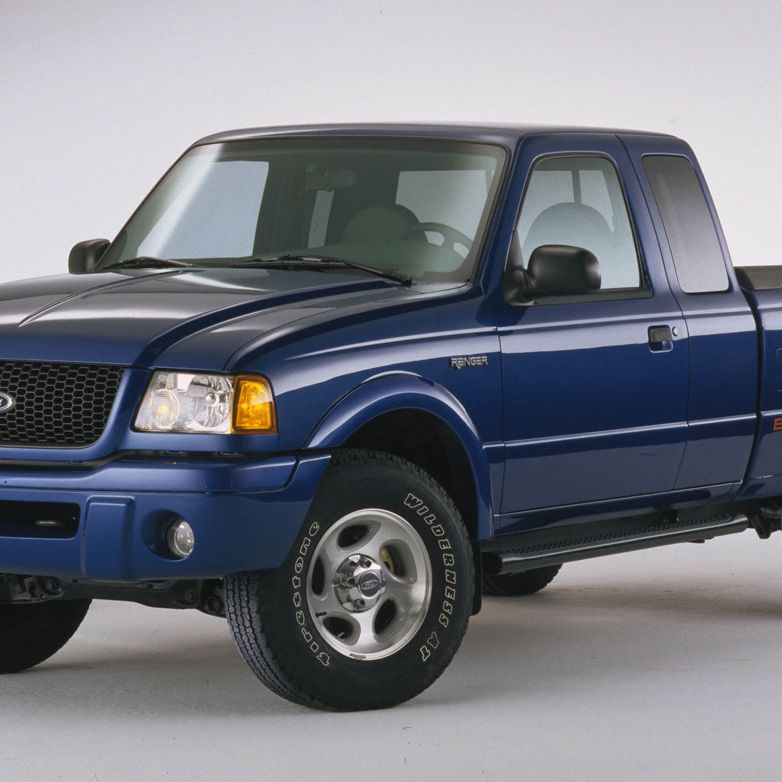
FX4 Off-Road Package (2002): A true gem for enthusiasts, the FX4 added Bilstein shocks, skid plates, and a limited-slip differential—ushering in a more trail-worthy version of the Ranger.
Through the late '90s and into the 2000s, Ford continued to iterate on the platform but resisted the temptation to overcomplicate it (a.k.a. they didnt change much). That stubbornness was both a strength and a weakness. As competitors like the Toyota Tacoma and Nissan Frontier evolved with larger dimensions, more powerful engines, and modern creature comforts, the Ranger largely stayed the course.
In 2011, Ford pulled the plug on the U.S. Ranger. Sales were slowing, the F-150 was getting more efficient, and midsize trucks seemed like a shrinking segment in America. But the Ranger didn’t die, at least not globally.
While the U.S. market said goodbye to the Ranger, the rest of the world was just getting started with what Ford called the T6 platform, a brand-new, globally engineered midsize truck developed by Ford Australia. This version of the Ranger was built to compete in international markets where midsize pickups are king, and it became a massive success in Asia, Australia, Europe, and Africa.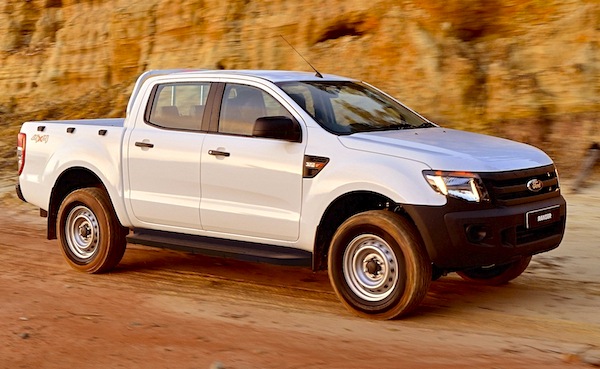
It was more refined, more capable, (more round) and better equipped than the U.S. version had ever been. It also spawned a number of variants, including the tough-as-nails Ranger Raptor, which was essentially an off-road beast with Baja-level suspension tuning and aggressive styling.
The irony wasn’t lost on American truck fans: the best Ranger Ford ever made wasn’t even sold in the States.
Sensing a shift in consumer demand, driven by (again) rising fuel prices, growing urban, populations, and increased interest in midsize trucks, Ford brought the Ranger back to the U.S. in 2019. But rather than create a new platform, Ford adapted the T6 global Ranger for American tastes.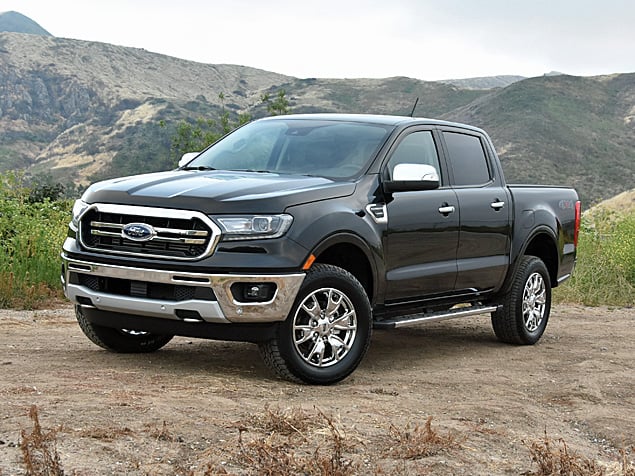
The U.S.-spec 2019 Ranger came with a 2.3L EcoBoost engine (270 hp, 310 lb-ft of torque), paired with a 10-speed automatic transmission. It delivered impressive power, solid towing capacity (7,500 lbs), and excellent fuel economy compared to full-size options.
Critics argued that it felt dated inside and out compared to the Tacoma or the more refined GMC Canyon, but Ford countered with capability and pricing. It wasn’t trying to win a beauty contest—it was aiming for utility and a bit of nostalgia.
Importantly, Ford brought back the FX4 Off-Road Package, giving enthusiasts a shot at a factory-backed, trail-ready Ranger once again. It included off-road-tuned shocks, skid plates, a locking rear differential, and terrain management systems.
With the debut of the 2024 Ranger, Ford finally went all-in. Built on an evolved T6 platform (shared with the new Bronco), the current Ranger is more powerful, more tech-savvy, and more versatile than any of its predecessors.
Key highlights include:
Engine Options: A standard 2.3L EcoBoost continues, with the new addition of a 2.7L twin-turbo V6 borrowed from the F-150 and Bronco.
Interior: The new interior finally feels premium, with a 12” vertical touchscreen running Ford’s SYNC 4 system, better materials, and smart storage solutions.
Raptor Trim: For the first time in the U.S., the Ranger Raptor is officially here. It’s got the same 3.0L twin-turbo V6 as the Bronco Raptor (405 hp), Fox Live Valve shocks, long-travel suspension, and a whole lot of off-road attitude.
For enthusiasts, this is a watershed moment. You can now buy a Ranger that’s trail-ready from the factory with Baja DNA baked into its frame. Much like its big brother, the F-150 Raptor, its one of the most badass off the lot trucks you can buy.
The midsize truck segment is more competitive now than ever before. Here’s a quick look at how the Ranger stacks up:
| Truck | Key Strengths |
|---|---|
| Toyota Tacoma | Legendary reliability, aftermarket support, off-road trims like TRD Pro. |
| Chevy Colorado | Strong engine choices (including diesel from 2015-2022), refined interior in new model. |
| GMC Canyon | More premium touches, Denali and AT4 trims. |
| Jeep Gladiator | Hardcore off-roader with unique open-air feel. |
| Nissan Frontier | Great value, solid V6 engine, recent redesign. |
| Honda Ridgeline | Minivan-like ride quality, excellent for light-duty users. |
The Ranger’s competitive edge lies in its balance. It offers more power than most rivals (especially with the V6), a well-rounded package for both work and play, and now with the Raptor, an enthusiast option that truly stands out.
Beyond the off-road crowd, the Ranger appeals to a very real, very practical segment of the population.
Fuel Efficiency: Thanks to turbocharged engines and 10-speed transmissions, Rangers deliver strong MPG for their size and capability.
Size Advantage: Easier to park than full-size trucks, especially in urban or suburban areas.
Payload and Towing: With over 7,500 lbs of towing and solid payload numbers, the Ranger can handle boats, campers, dirt bikes, and more.
Daily Drivability: Comfortable enough for long road trips, efficient enough for commutes, tough enough for job sites.
For many, the Ranger represents a “just right” option: big enough to get the job done, small enough to live with daily.
Truck enthusiasts have always found something to love about the Ranger—whether it's modding a 1990s FX4 for trail duty or outfitting a 2024 model with roof tents and MOLLE panels.
Aftermarket Support: Lift kits, winches, bumpers, racks, lighting—virtually every major off-road brand supports the Ranger.
DIY Culture: Thanks to its more manageable size and simpler design (compared to a Super Duty), the Ranger is a favorite for DIY mechanics and overlanding builds.
Community Events: Ranger-specific forums and Facebook groups are alive and well, and the new Raptor trim is spawning its own niche events and meetups.
The Ranger may not always have the cult-like following of the Tacoma, but it punches well above its weight in terms of community, customizability, and capability.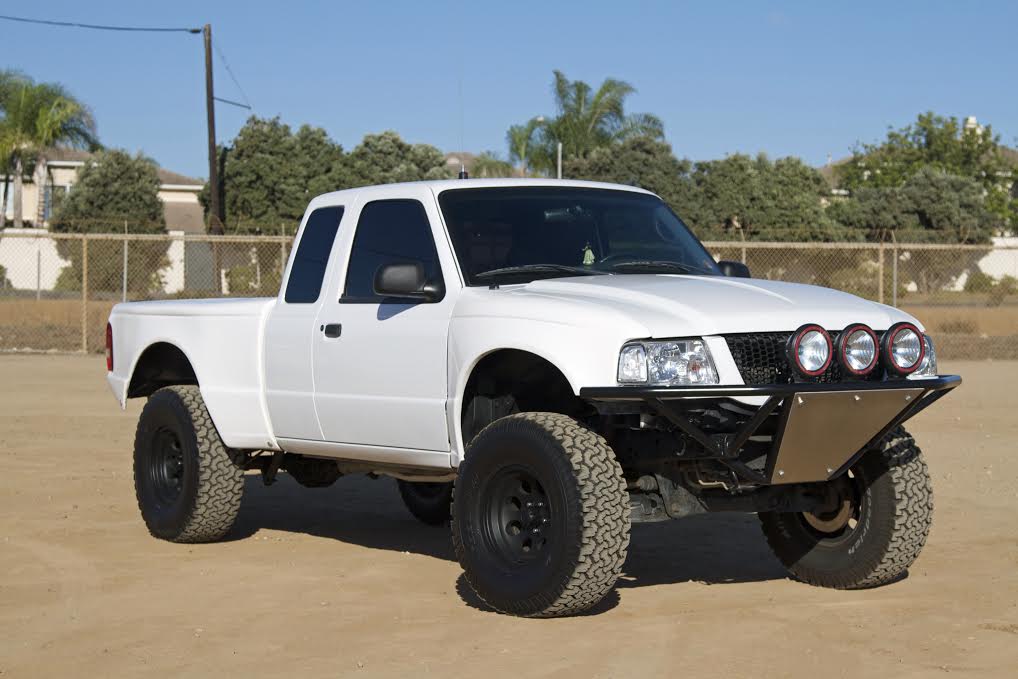
Looking forward, Ford has hinted that electrification will eventually reach the Ranger line, likely in the form of hybrid or plug-in hybrid models, possibly even a full EV variant.
Globally, the Ranger is also evolving. In countries like Australia, Thailand, and South Africa, it continues to be a flagship truck, often used in extreme conditions and far-flung locales. That global input feeds back into the American product, making it more durable and well-rounded than many of its competitors.
The Ford Ranger has managed to survive and thrive not because it's flashy or revolutionary, but because it’s consistently useful, thoughtfully designed, and deeply adaptable.
From its early days as a compact commuter-hauler to its current role as a high-tech, trail-capable midsize monster, the Ranger has stayed true to its core mission: do more with less.
It doesn’t try to be everything to everyone, but it sure gets close. Whether you’re mounting MOLLE panels, towing a trailer, building a prerunner for the desert, or just driving to the hardware store, the Ranger makes a convincing argument that you don’t need to go big to get it all done.
And now, with the Raptor raising the enthusiast bar and Ford continuing to refine the formula, the Ranger is no longer a fallback choice, it’s a first pick for more people than ever before.
Why Bother With a Stubby Antenna? A Deep Dive into our Perfect Fit Stubby Antenna Lineup
Father’s Day Gift Guide (For Dads, By Dads): Gear Up with BuiltRight
1 comment
I love my 2000 XLT 4×4. Its down at the moment with control module issues and parked in front my parents’ house. They’ve relayed 4 or 5 requests to buy it from random people who pass by. My answer is always, “NO!”, but I understand why they’re asking! Lol. Great truck!! Cool article.